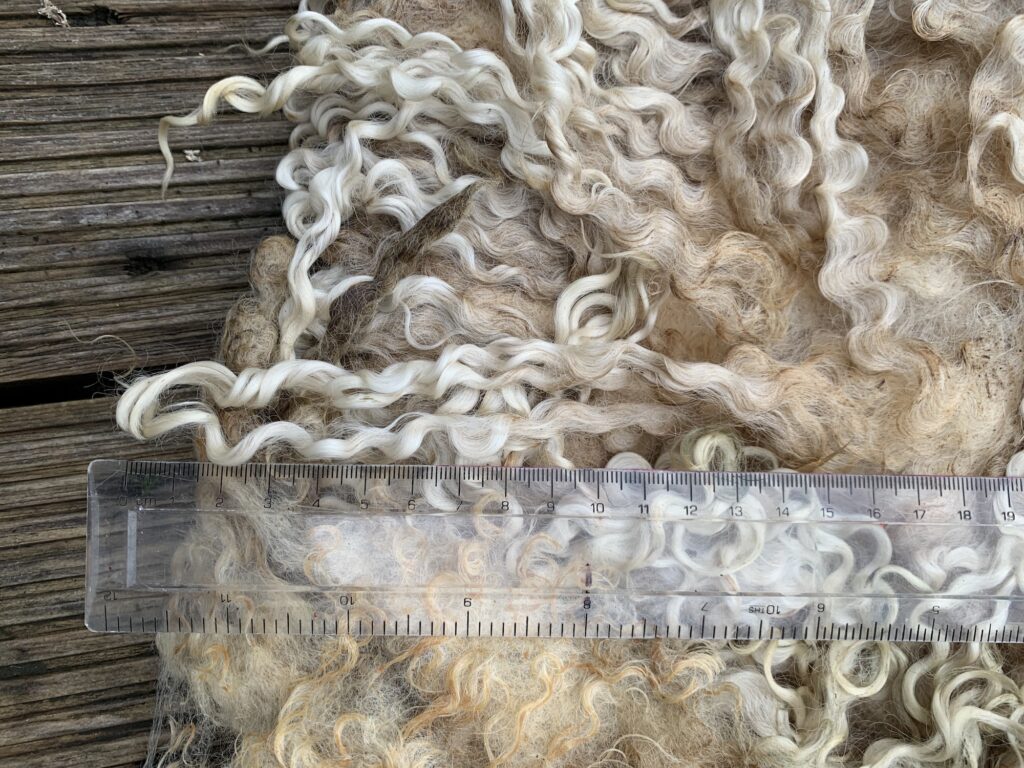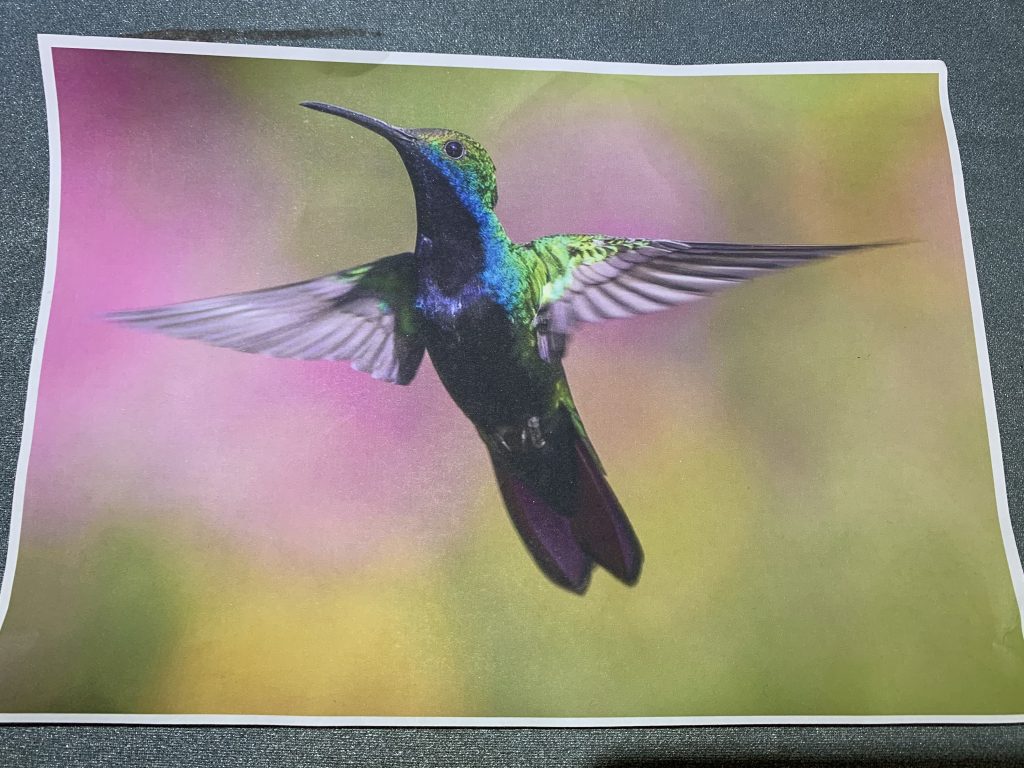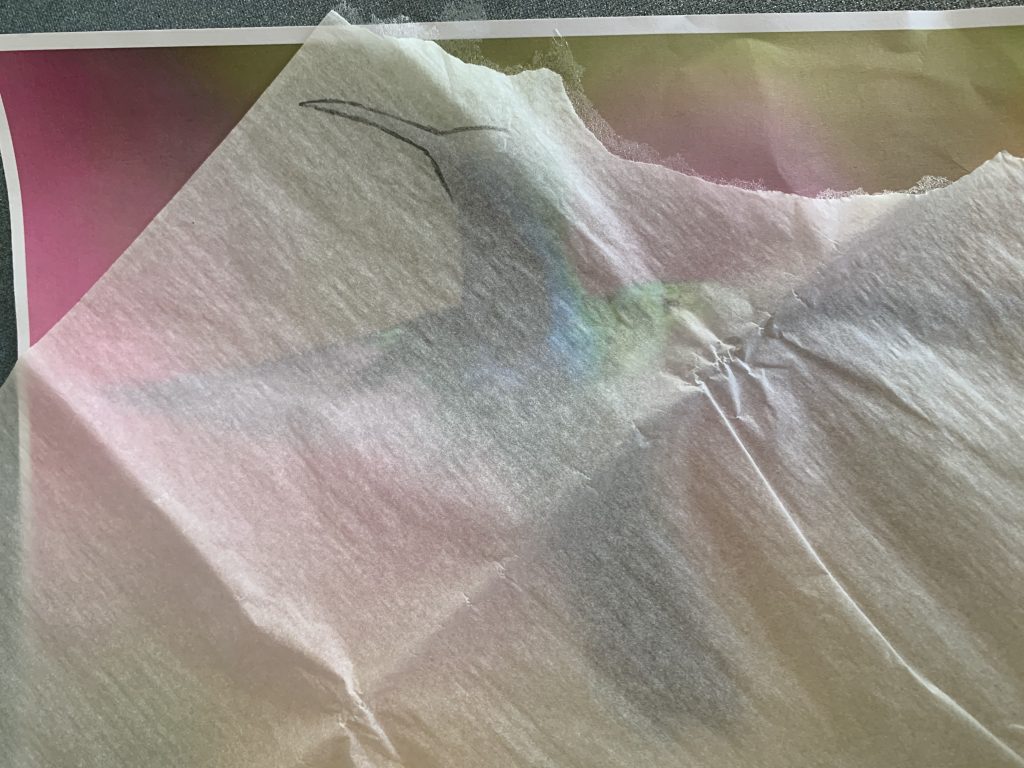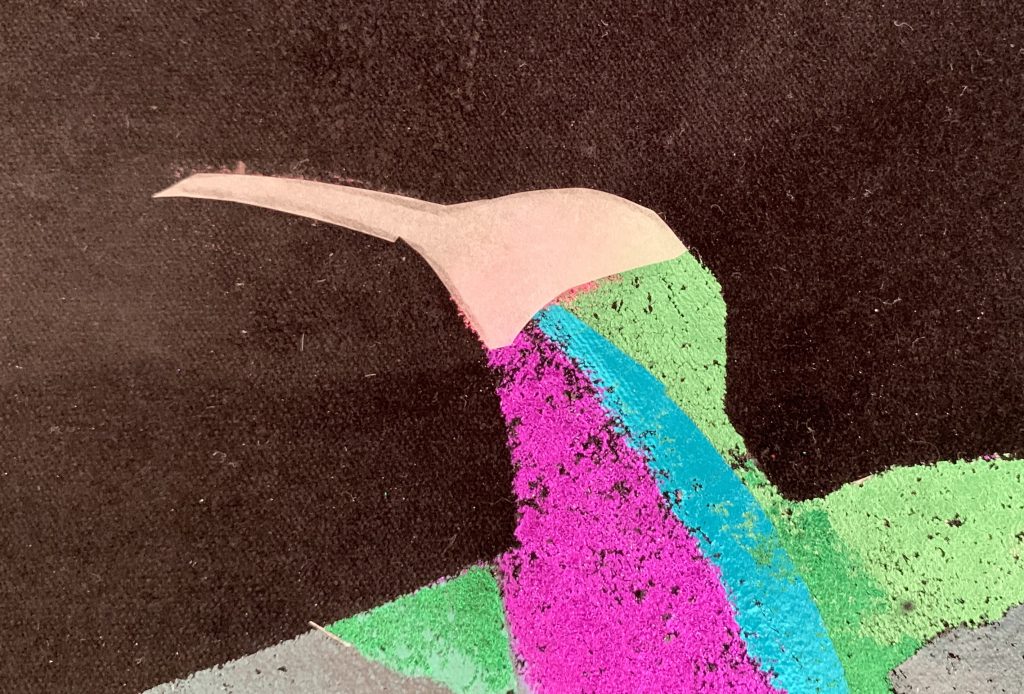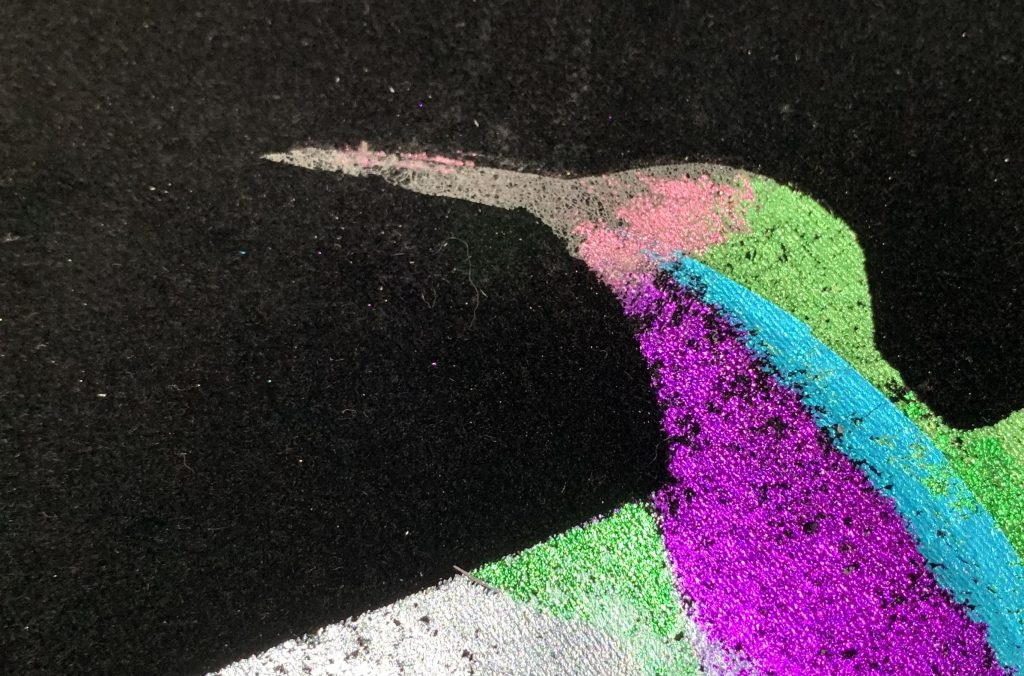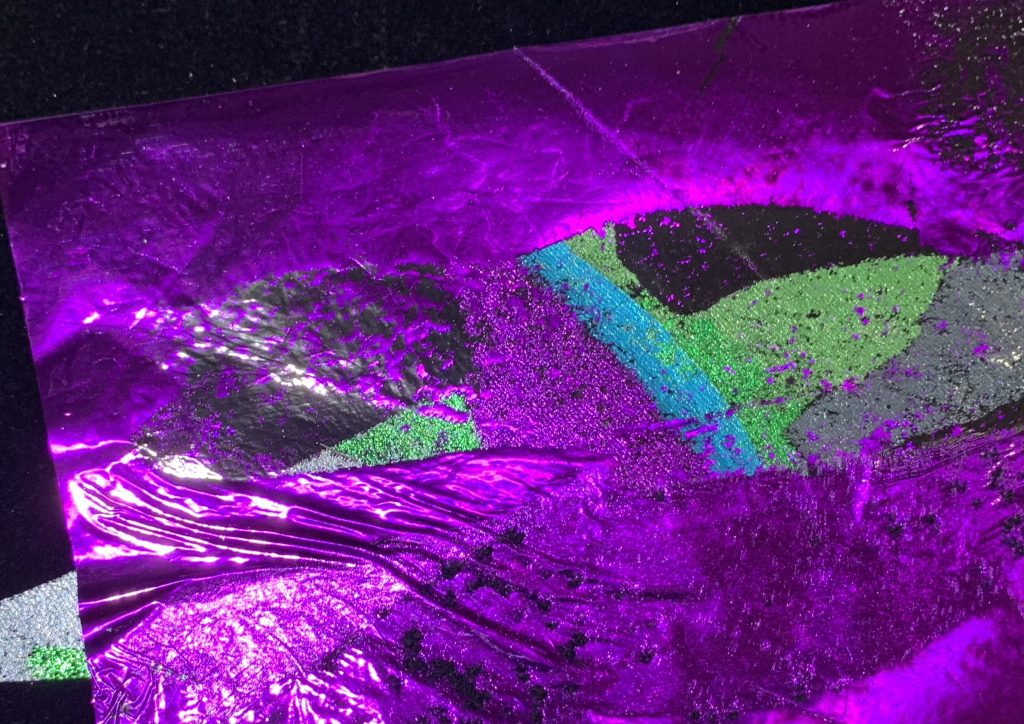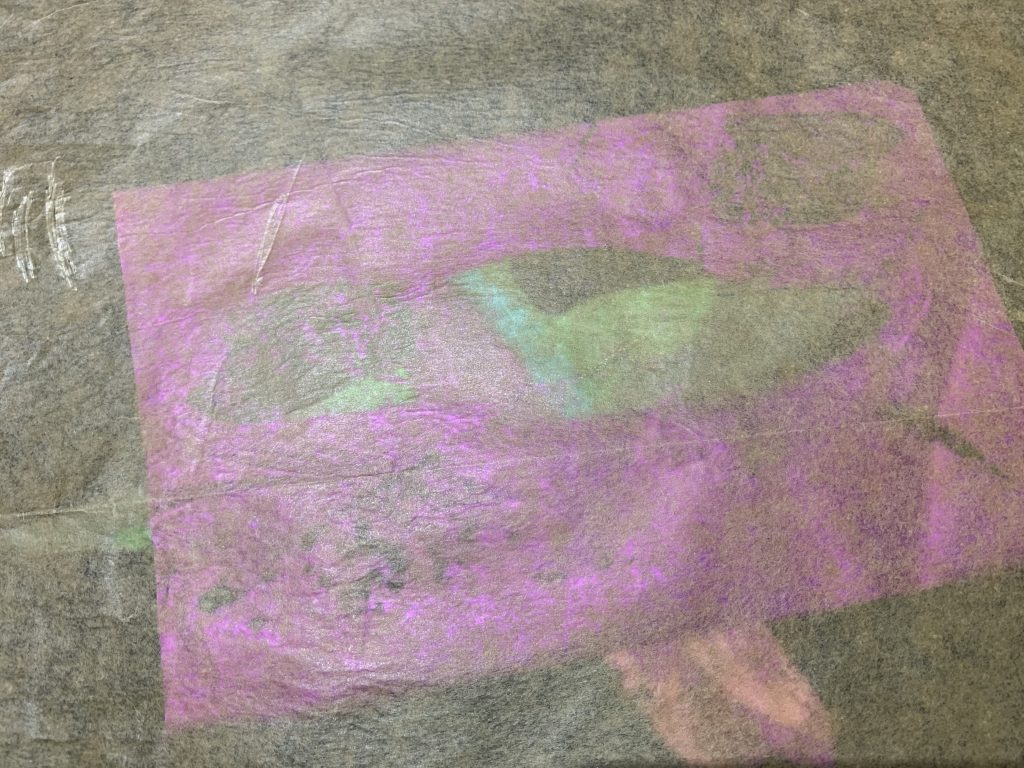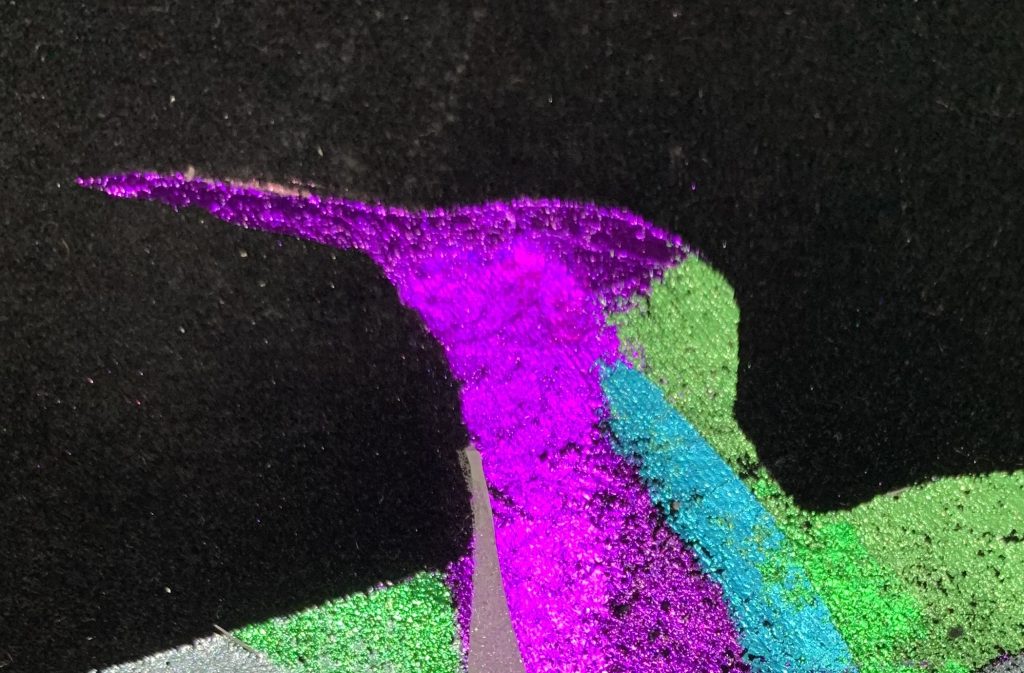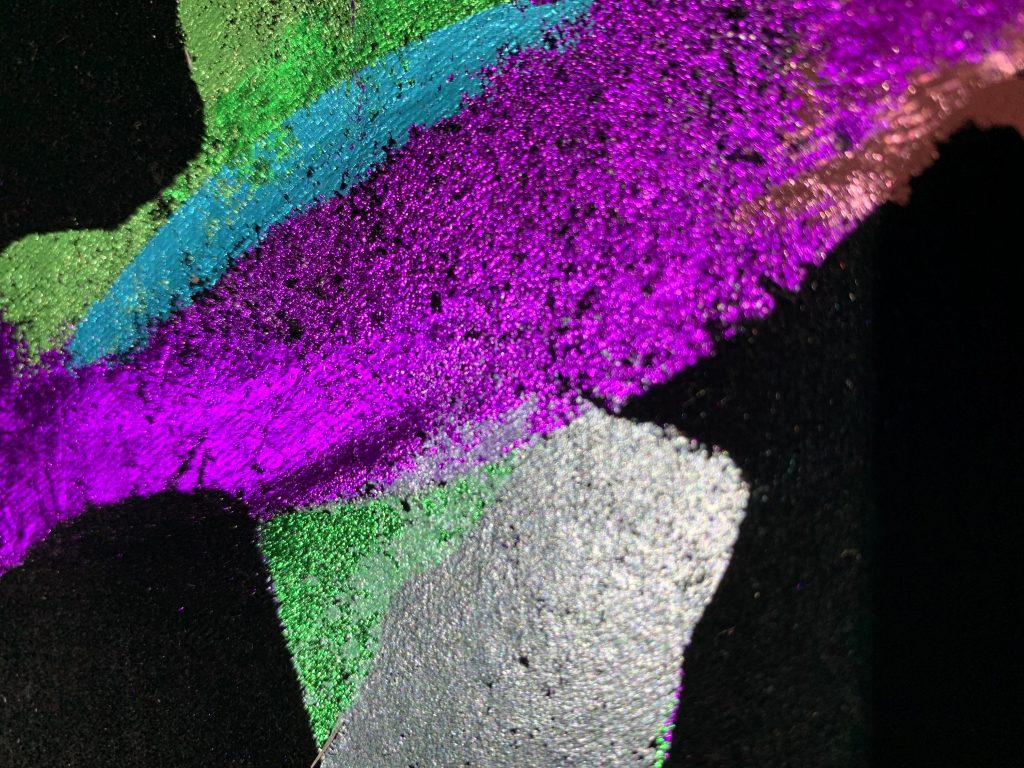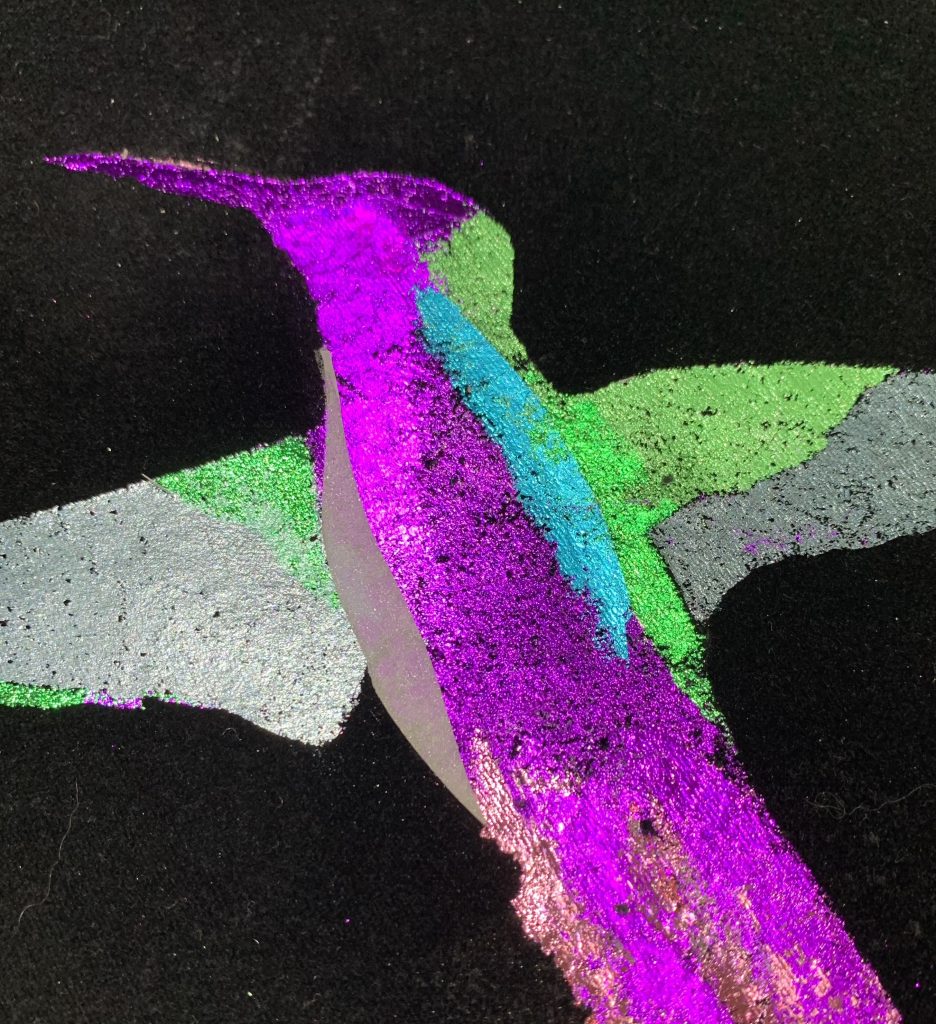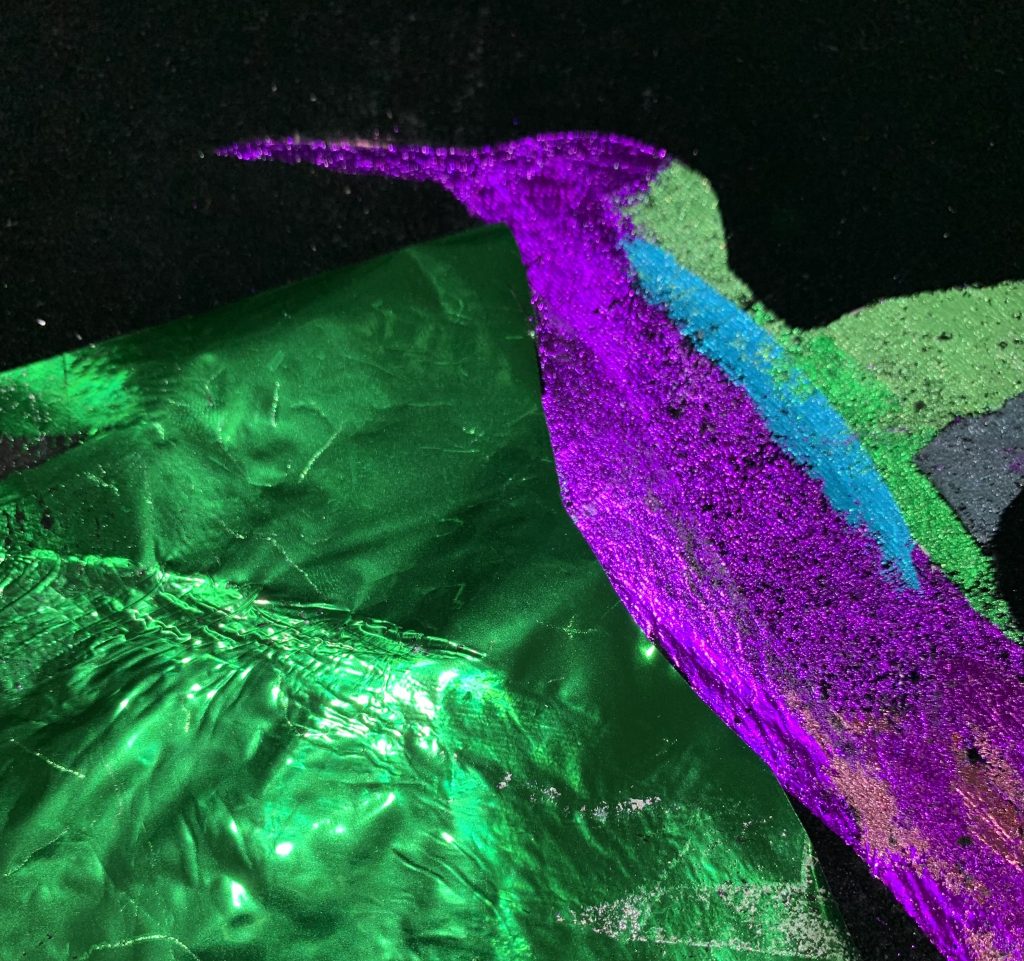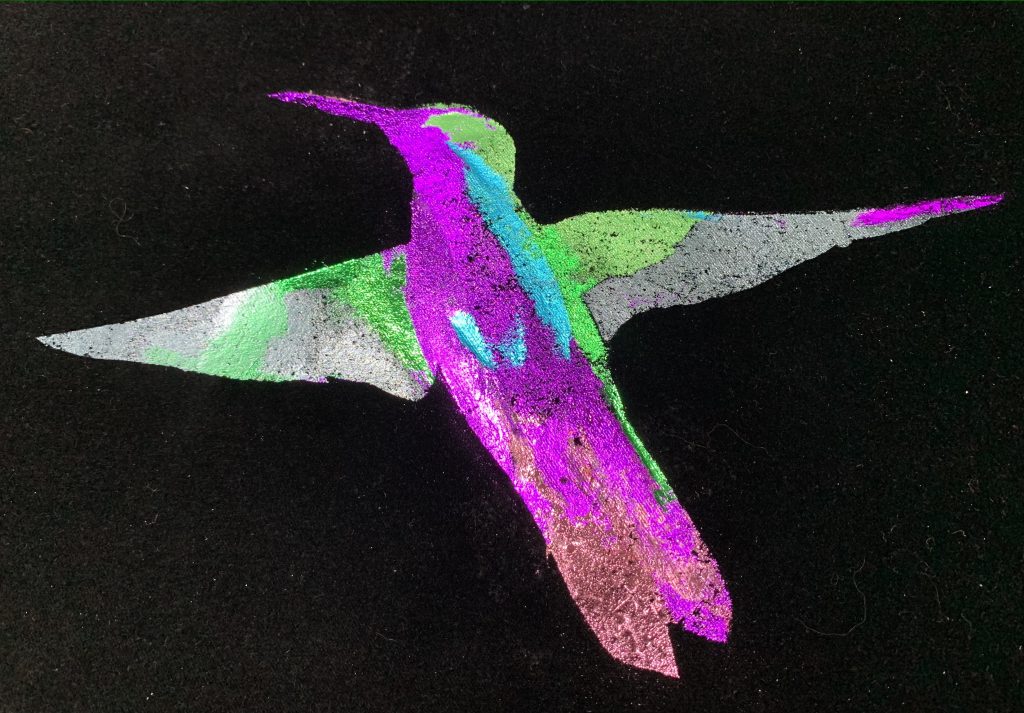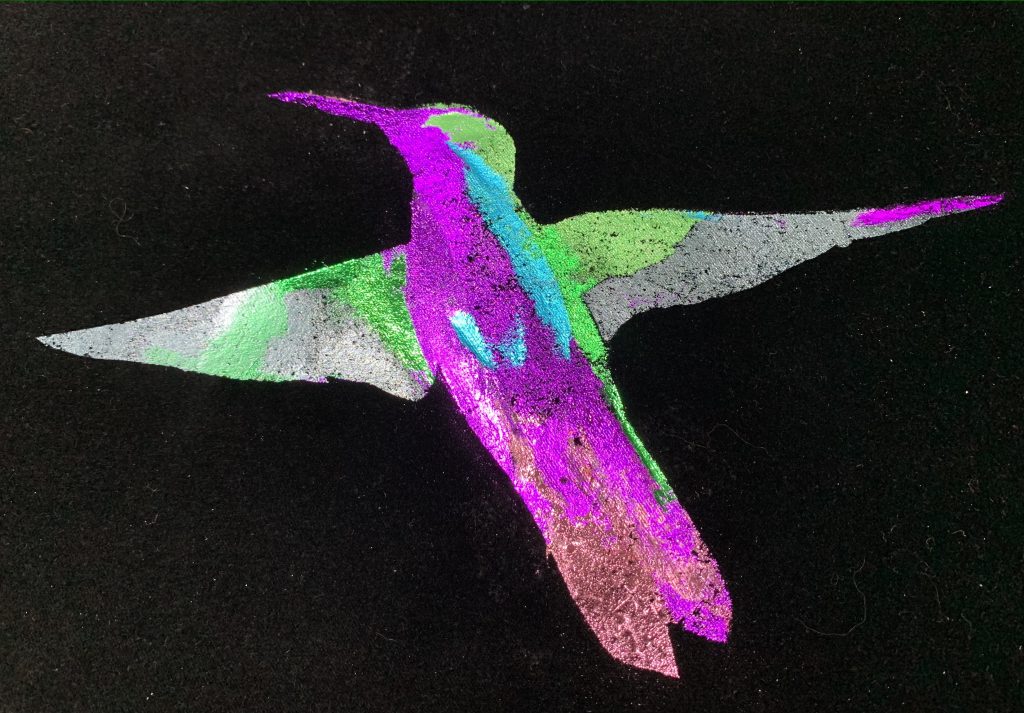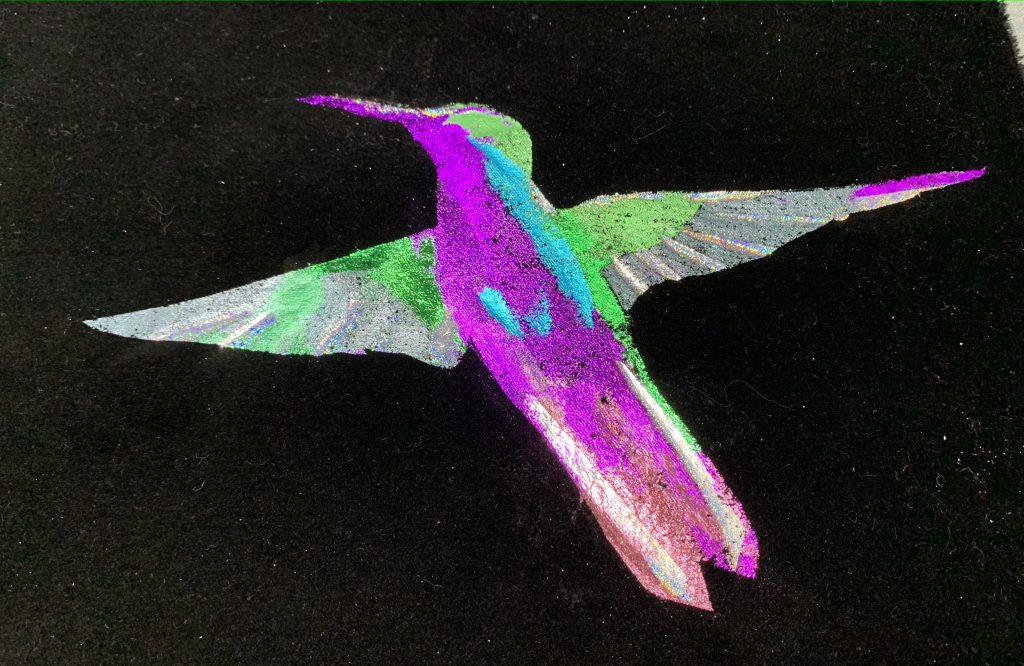Here we are in January 2021, with Covid vaccines being approved for use and hope for brighter, more normal days just over the horizon. January is traditionally a month for reflection and making plans for the future. This year more than ever and I have an additional reason to be focussed on the year ahead….. my partner has accepted a job offer from Aukland University, so we will be moving to New Zealand in March / April.
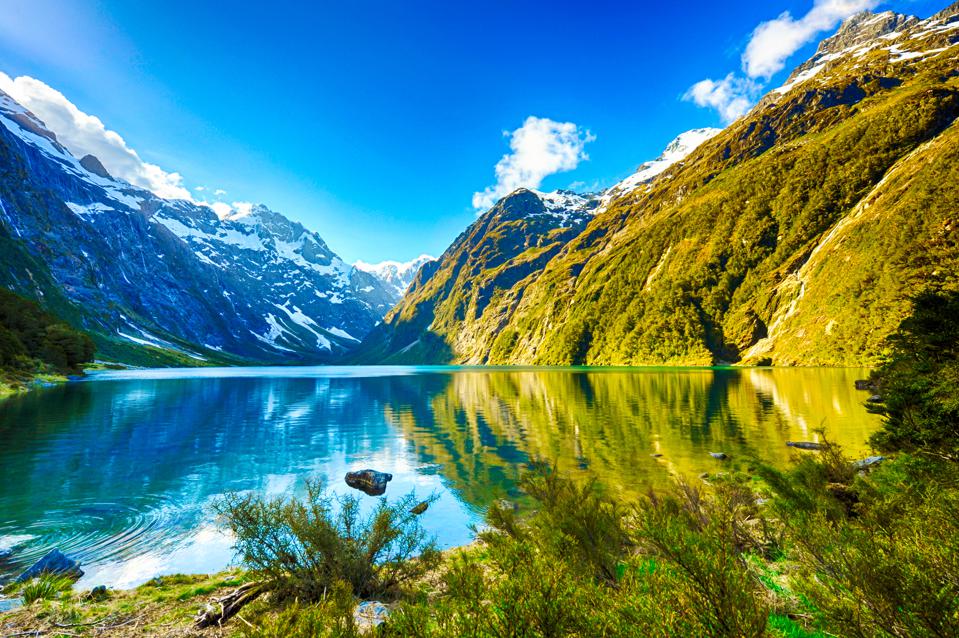
Part of me thinks, the middle of a pandemic has to be the worst time to make such a drastic move but then, is there ever a good time? At least New Zealand is one of the few countries in the world who have a managed to control the virus on their shores and, consequently, are leading a relatively normal existence.
We made the decision to move in November and have been decluttering ever since, I am horrified by how much STUFF we have accumulated in our 10 years in this house. In many ways it has been a lovely trip down memory lane, finding trinkets and photos that have languished in a cupboard or box for 10, 20, even 30+ years.
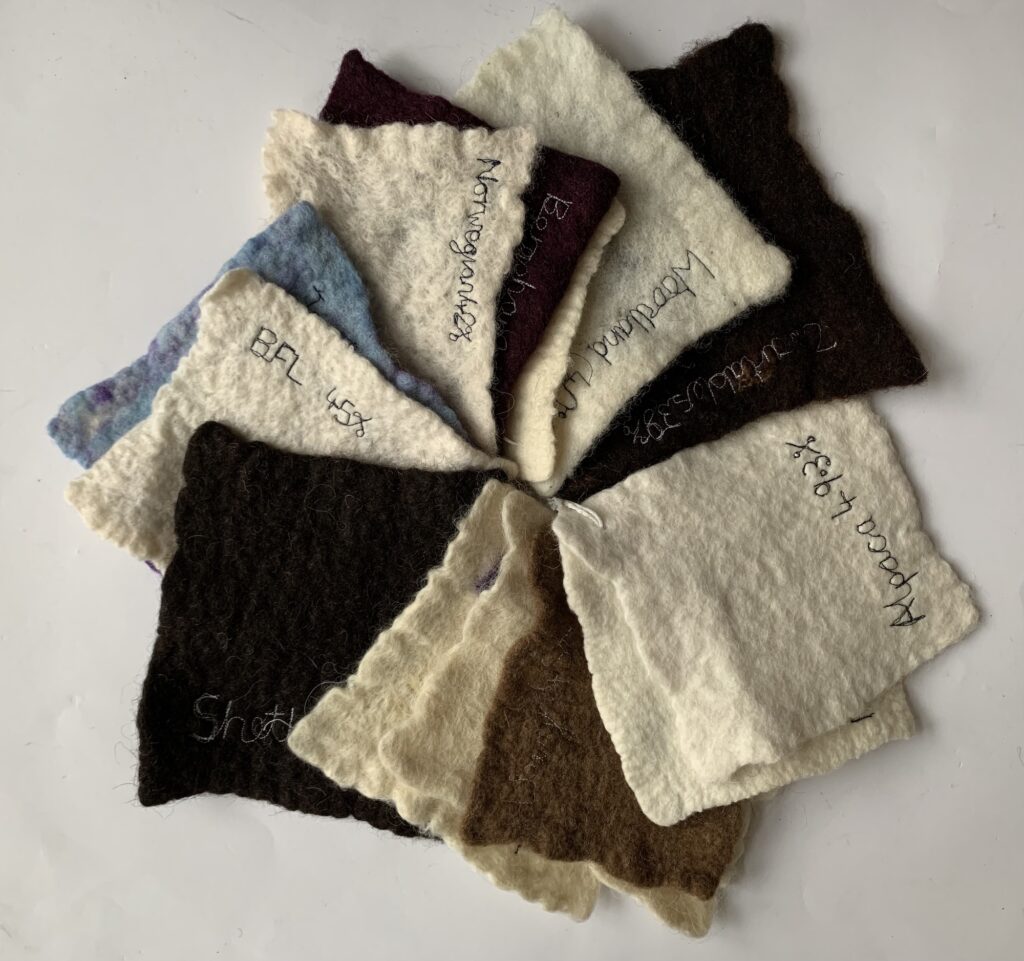
While my felt samples aren’t quite that old (the oldest might be around 10 years old) they did bring back many happy memories as I was sorting through them, trying to decide which ones to keep.
Some of them document some interesting ideas, techniques and experiments that I thought might be of interest to you too….
Colour blending techniques:
When we felt, we are encouraging the fibres to mix and mingle, so when we apply layers of wool in different colours, the colours also migrate and mix, a little bit like mixing paint. This first technique is something I try to get my bag class students to incorporate as it makes for an easy way to achieve subtle tint / tone graduation on the outside of the bag:
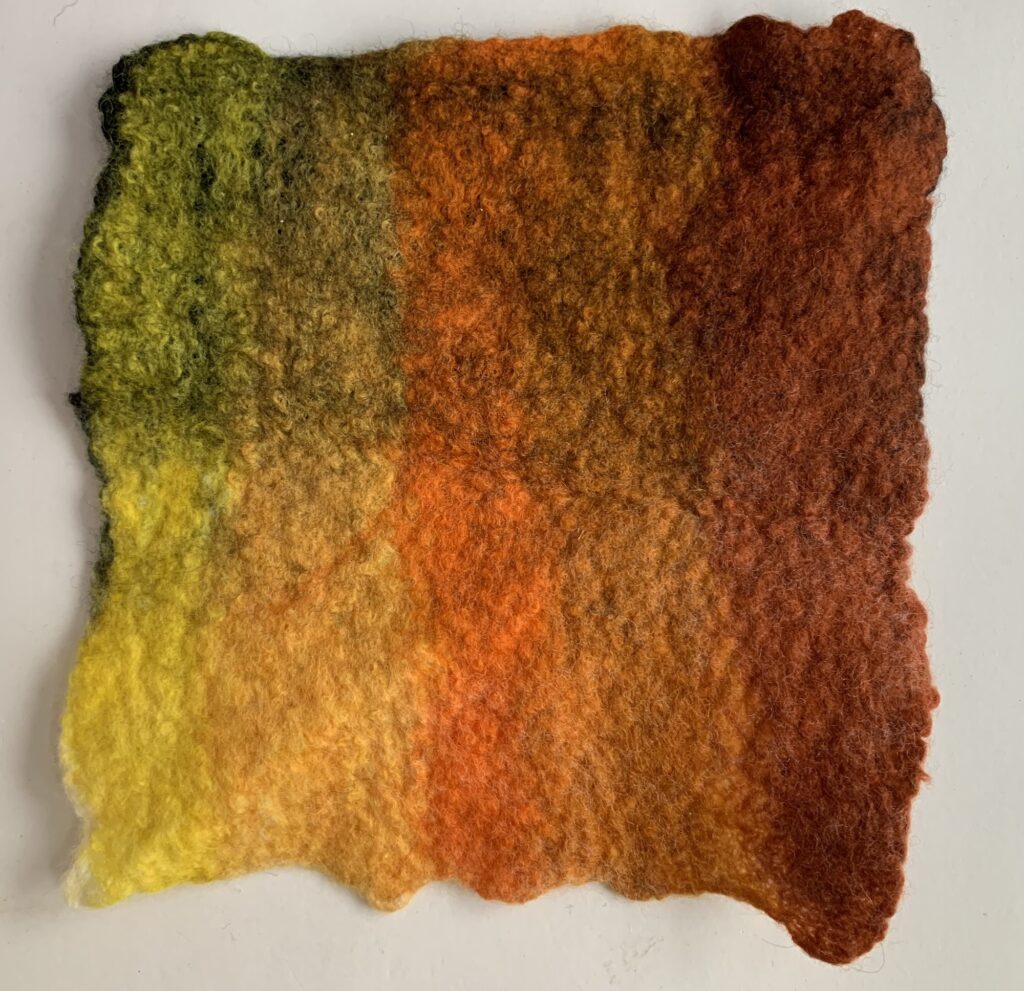
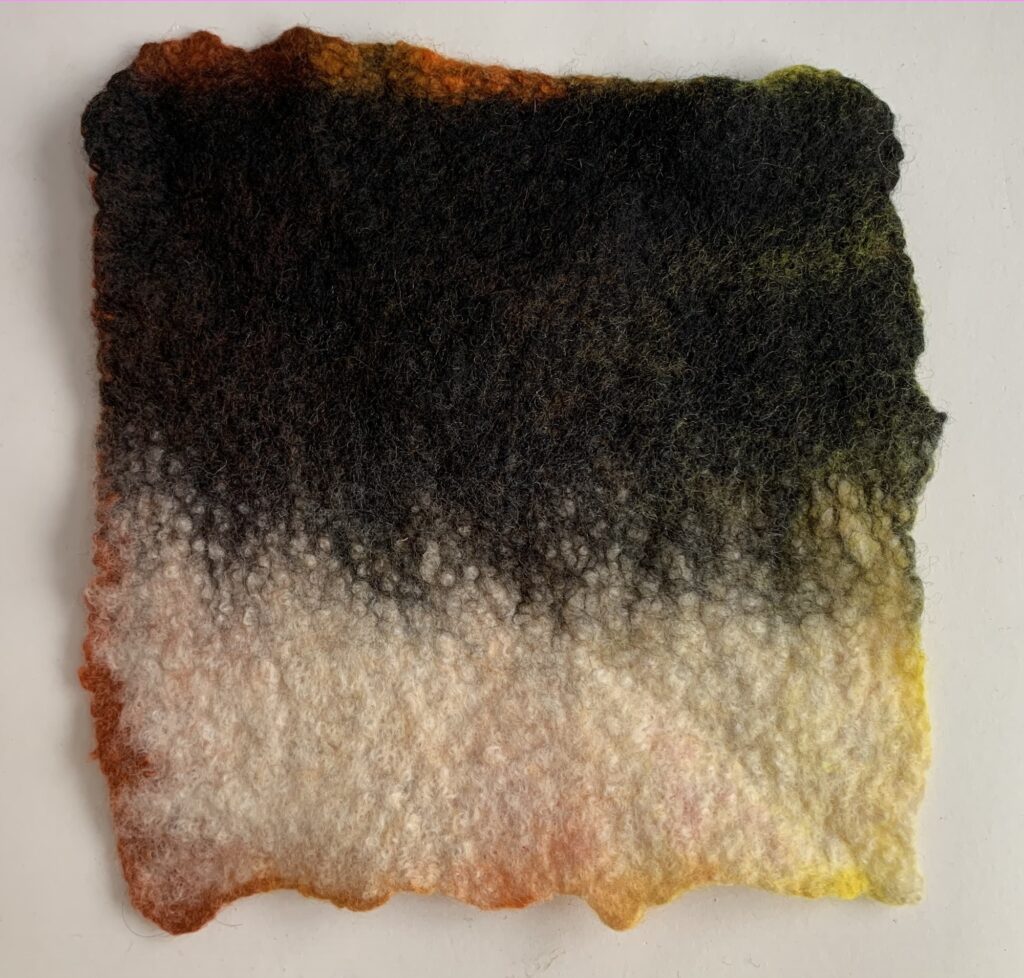
The more this piece is fulled the greater the effect the black and white fibres will have on the colours on the front. By adding a mid-grey between the black and white you can achieve a more subtle change of tone to the coloured side of the felt.
Mixing different colours is also possible and this is so much fun for anyone interested in colour-theory. For this next sample I laid out 2 fine layers of different colours of merino over a green base. Up close (if you click on the image it should enlarge), you can still see the distinct colours in a random marbled pattern but from a distance the colours blend and because I have used colours on the opposite side of the colour wheel, the resulting blends are dulling the top colours and edging them towards greys and browns.
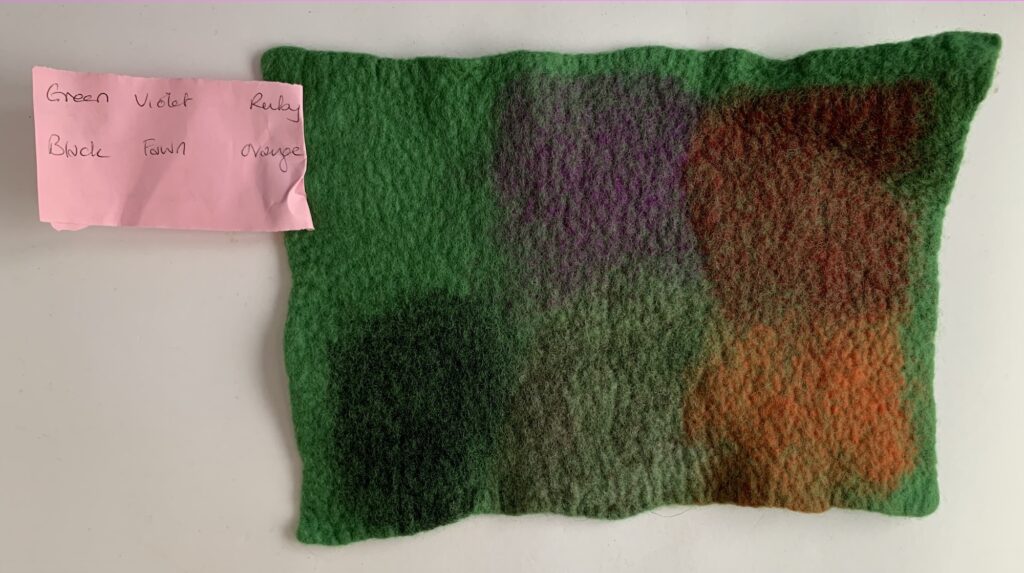
Devore
This sample was made by nuno-felting some hand-dyed cotton muslin to merino wool. Then painting on devore paste, leaving it work its magic for a few minutes before washing the paste out. The paste dissolves / etches away the plant-based fibre (cotton) but leaves the animal fibres (wool) in tact, the grey wool can be seen where the violet / red cotton has been removed.
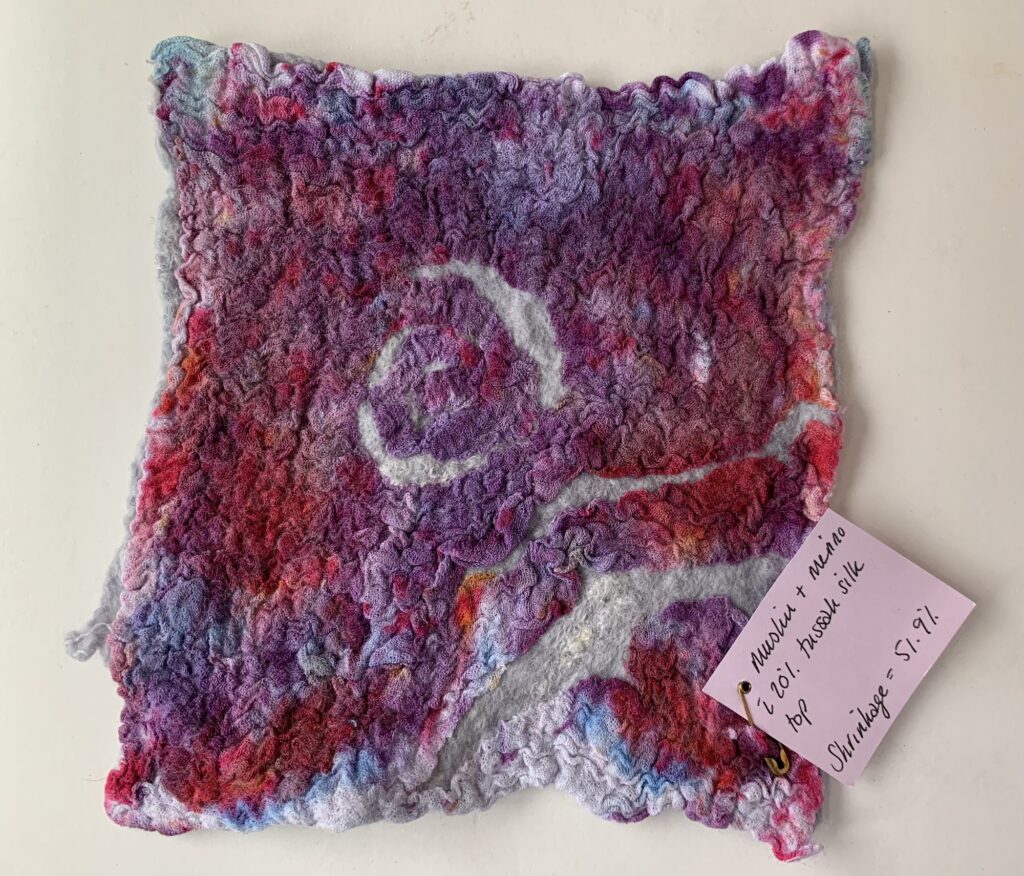
Layering different materials / fibres
This next sample is one of my favourites although the technique is nothing particularly ground-breaking, it is strips of hand-dyed prefelt, laid over hand dyed habouti silk on a merino base.
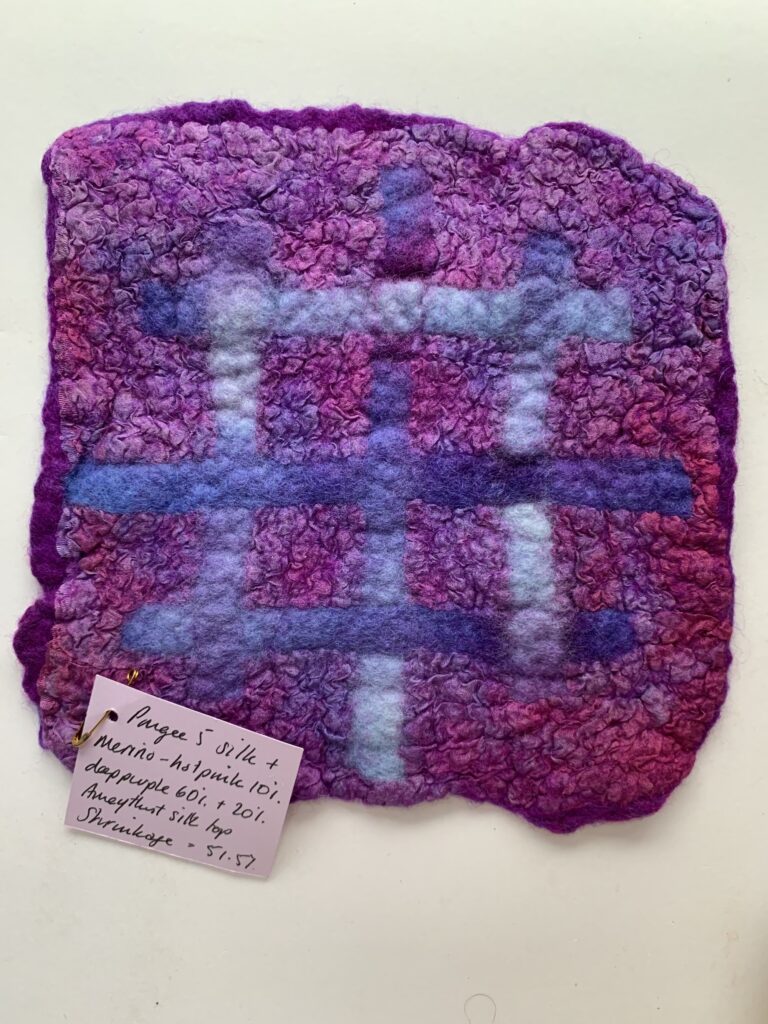
This is the back, I really like the way the prefelts on the front have created a subtle, embossed effect on the back.
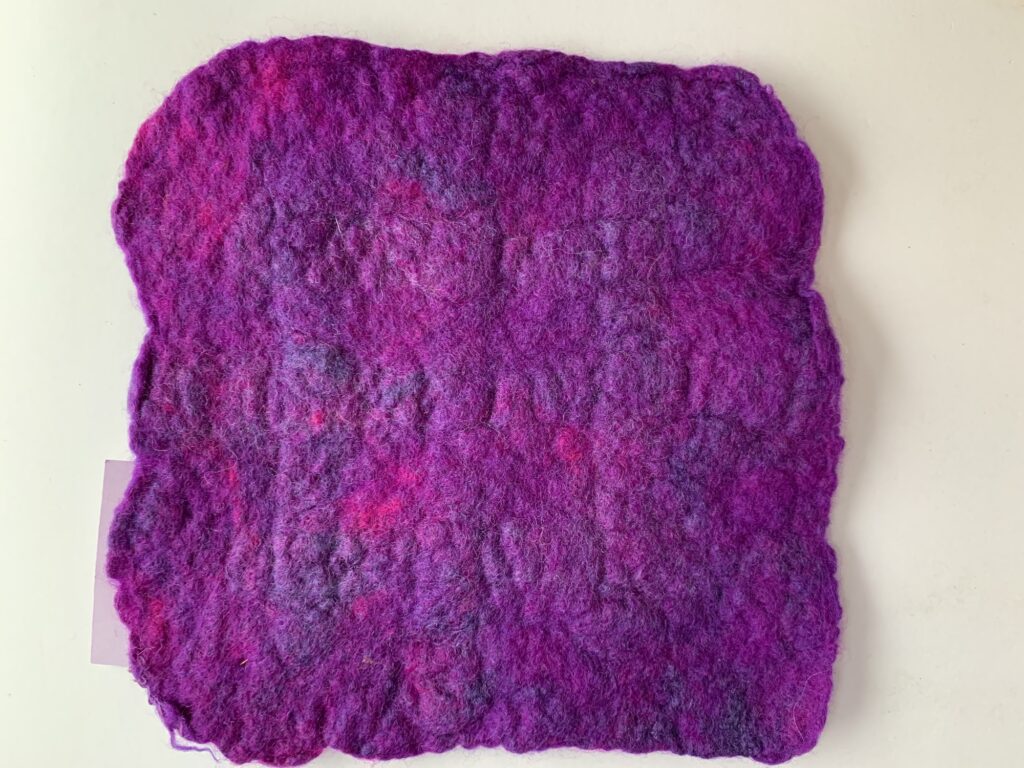
Adding locks for texture
When most of us think of adding locks to a piece, it is to add lots of fluffy texture with the locks only attached to the base felt at their base but on a workshop I took with Heidi Grebb we explored laying out locks much as you would a final layer of tops….
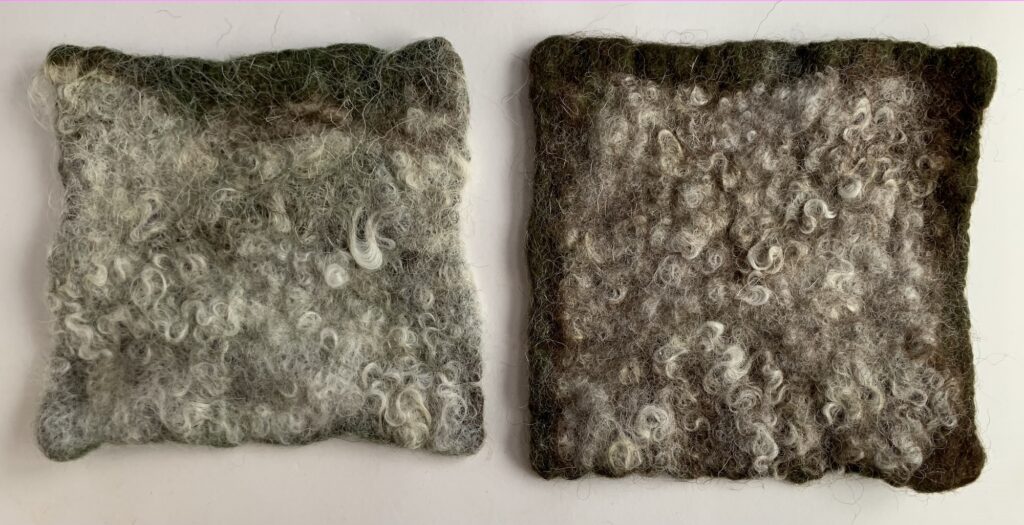
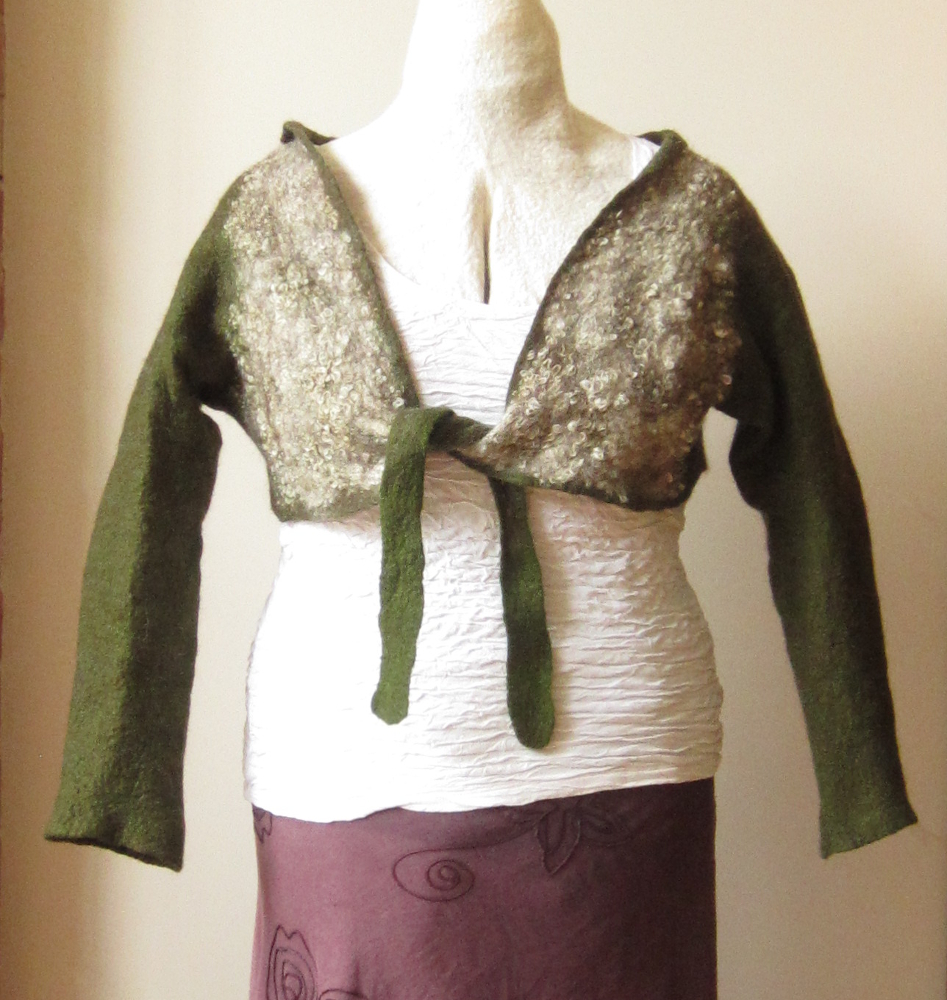
Fake tweed
By laying different coloured yarns (ideally different weights too), it is possible to create felt that looks a lot like tweed. If you use yarns with a high wool content, they will felt into the wool base on their own. If using yarns with a higher synthetic content you will need to add a very fine layer of wool fibre over the top to help anchor the yarns into place.
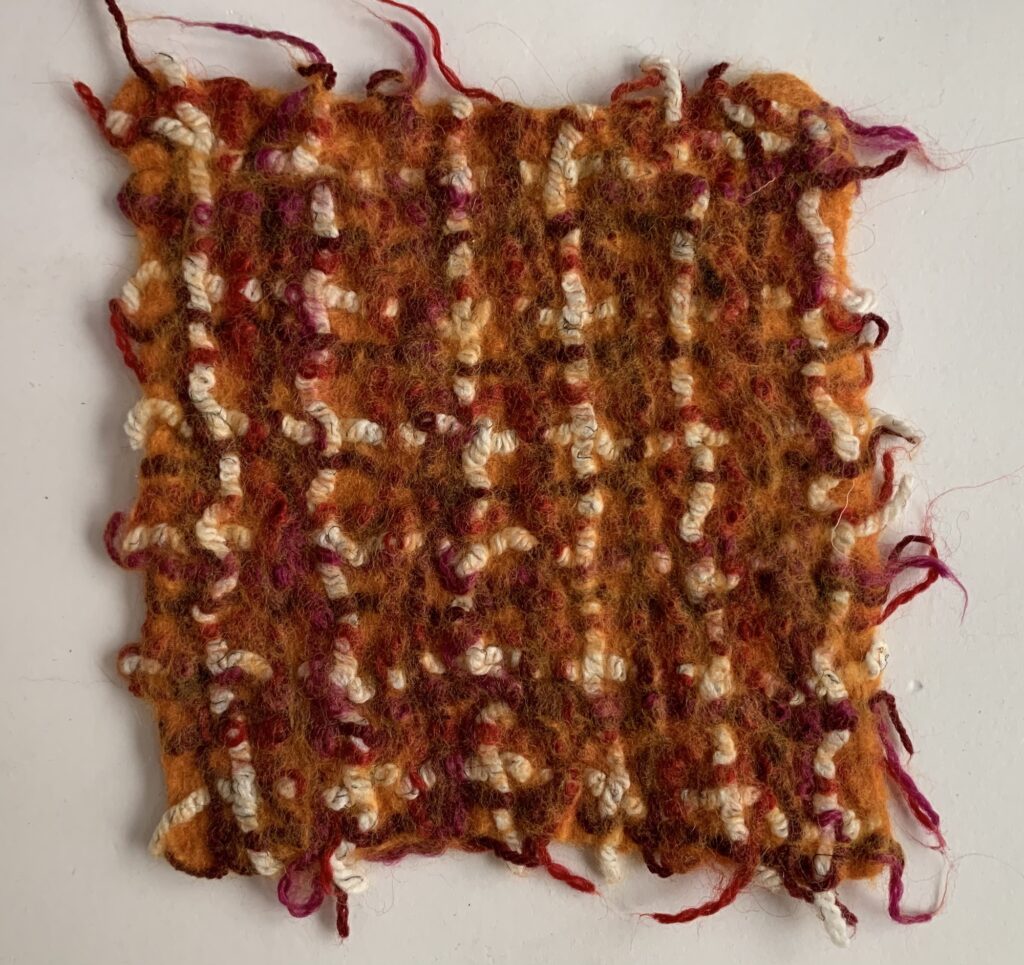
Inclusions
This last sample is my favourite, perhaps I should stop calling it a sample and think of it as a mini work of art instead… It is three, silk cocoons felted between several layers of Bergschaff.
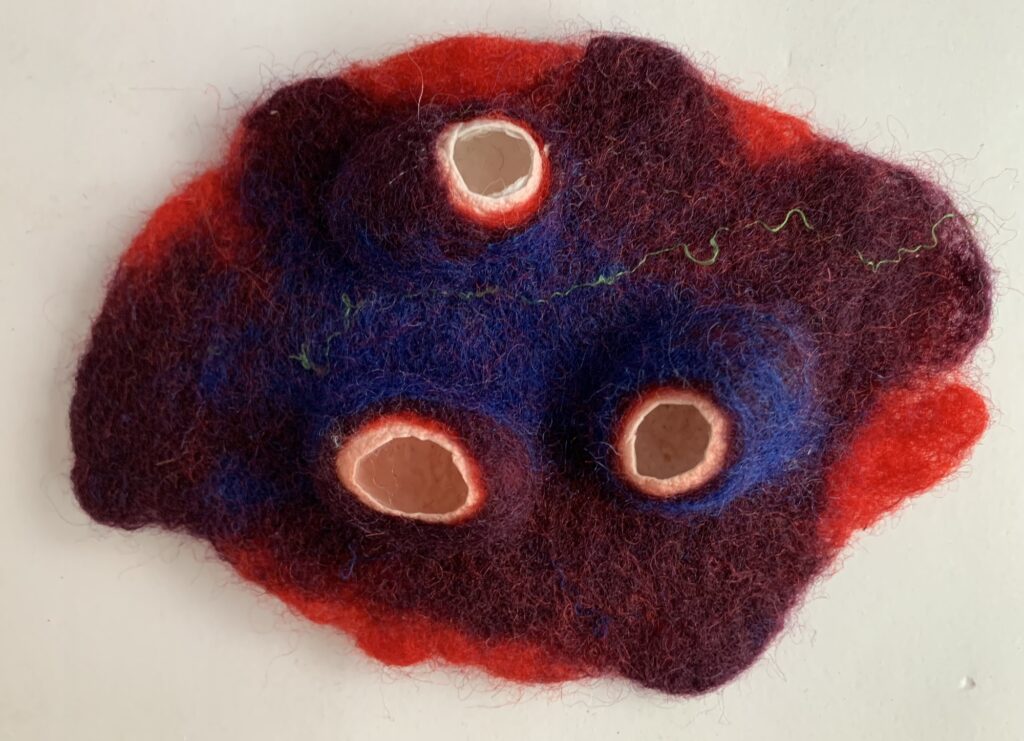
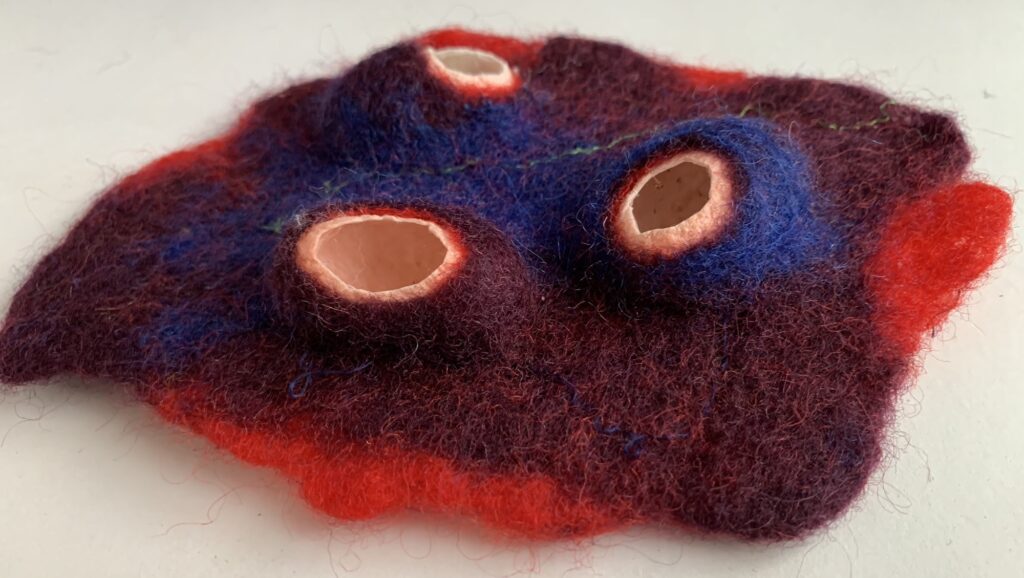
I hope you found these samples / techniques interesting, if you have any questions about them, please ask!
As part of my mammoth clear-out I have a couple of items listed on Ebay that UK residents might be interested in:
A vintage, fedora / trilby style wooden hat block: https://www.ebay.co.uk/itm/333849774234
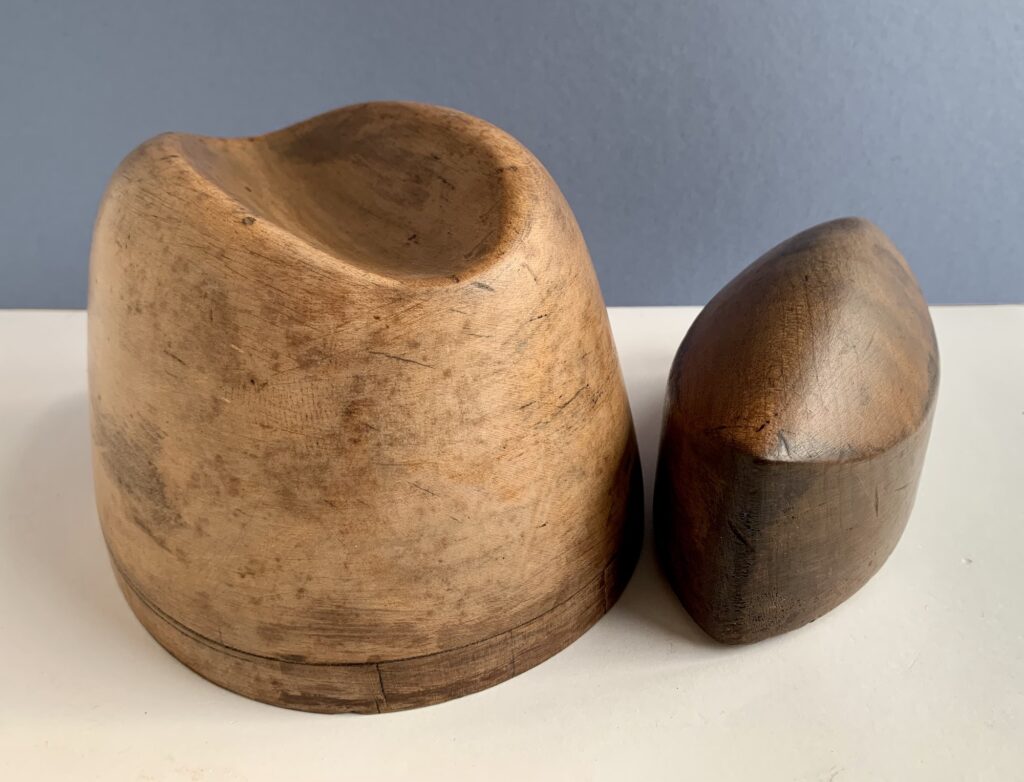
A whole Wensleydale fleece, I am gutted to be leaving this behind but I know NZ border biosecurity will incinerate it on sight and that would be even more heart-breaking: https://www.ebay.co.uk/itm/333851163732
